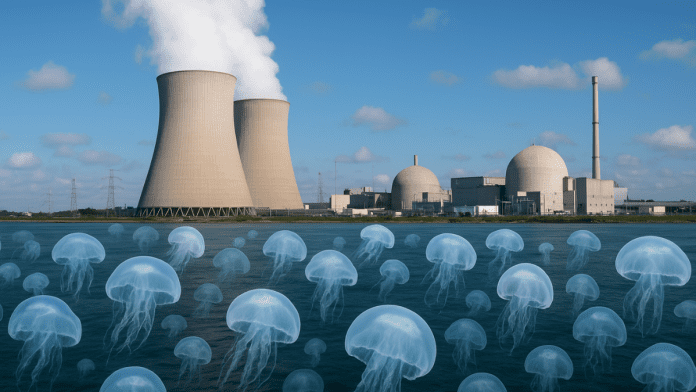🕒 Last updated on August 12, 2025
Last weekend, a surprising and uncommon issue arose at one of the biggest nuclear power facilities in Europe. It was not a storm, a technical breakdown, or a security threat. Instead, it was an invasion of jellyfish that forced part of the facility to stop operations.
A sticky sea invasion halts reactors
The Gravelines Nuclear Power Station in northern France, located near the North Sea, had to shut down multiple reactors after an overwhelming swarm of jellyfish blocked its cooling system.
The incident began late on August 10. The plant shut down three of its six reactors shortly before midnight. Early the next morning, on August 11, a fourth reactor was also stopped. The plant’s operator reported that the shutdown was caused by “a massive and unpredictable presence of jellyfish” in the intake area.
The company confirmed that this was not a nuclear emergency. Instead, the shutdown was a part of routine safety protocols that are meant to safeguard the plant’s systems in the event of unforeseen circumstances. According to the operator, there was no danger to workers, the surrounding community, or the environment.
🌍 Climate collapse ahead? Norway’s $1.6 trillion fund warns of 19% U.S. portfolio loss
How jellyfish disrupt a power plant
Nuclear plants need constant cooling to operate safely. This is usually done by drawing in large amounts of seawater, which passes through the plant’s cooling systems before being released back into the sea.
At Gravelines, seawater from the North Sea is pulled in through intake pipes equipped with screens. These screens are meant to prevent debris, fish, and other marine life from entering the cooling system.
However, when a massive swarm of jellyfish drifts into the area, these screens can quickly become blocked. Without a steady flow of water, the plant cannot keep its reactors at a safe temperature. In such cases, operators shut down reactors until the problem is cleared.
The problem can be made worse if jellyfish die and break down in the water. Their bodies can turn into a soft gel-like substance, which can slip through the filters and cause blockages deeper inside the cooling system.
In this incident, the jellyfish were caught in the filter drums of the plant’s non-nuclear section. Once the filters became clogged, the plant’s automatic protection system activated, stopping the affected reactors.
🧱 Finland builds world’s largest sand battery — and it’s heating homes without oil or pollution
Workers are now in the process of clearing the jellyfish and ensuring the cooling system is functioning normally before restarting the reactors.
Not the first time jellyfish have caused chaos
The warm water released from Gravelines’ cooling towers is often reused by a local commercial fish farm, which benefits from the higher temperature. However, warmer water in the sea has also been linked to increases in jellyfish populations.
Experts say that jellyfish blooms—large gatherings of the creatures—are becoming more frequent in many parts of the world. Factors such as climate change, overfishing, and coastal construction can lead to fewer natural predators and more suitable conditions for jellyfish to thrive.
Jellyfish have already interfered with nuclear power facilities. Swarms forced nuclear plants in Scotland, Japan, and Israel to temporarily shut down in 2011. Two years later, in 2013, a reactor in Sweden was forced to stop operations when jellyfish clogged its cooling water system.
Jellyfish might seem harmless—they are 95% water, have no bones, and have no brain—yet in large numbers they can cause significant problems for industries that depend on clean, unobstructed seawater intake.
Climate Convergence Has Begun: 6 Global Systems Are Collapsing at Once
At Gravelines, the shutdown was a clear reminder that even modern, highly engineered facilities can be vulnerable to the forces of nature. The plant’s operator has reassured the public that safety systems worked exactly as intended, preventing any risk to people or the environment.
For now, teams at the plant are focused on safely restarting the reactors once the cooling system is free of jellyfish. While this incident may sound unusual, it highlights a recurring challenge faced by coastal nuclear plants around the world—the surprising power of one of the ocean’s simplest creatures to bring advanced technology to a sudden stop.

